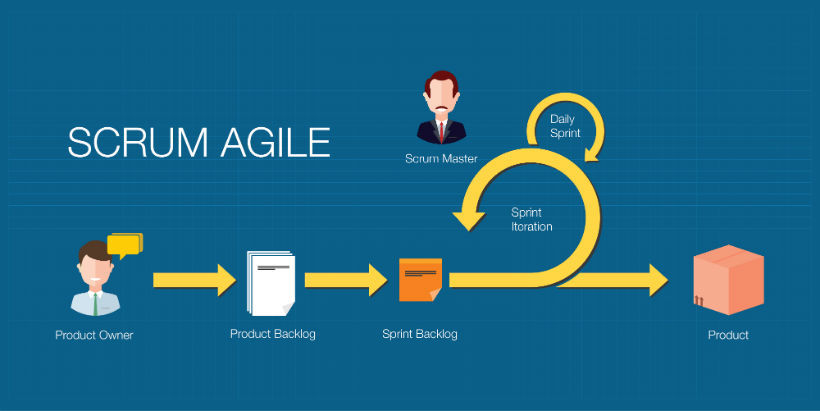The Agile Guide To Agile Development: Adapting To Change Successfully
Let’s travel in time to the training era of the past… training sessions were formal with a specific time and a specific venue. Things were nice and predictable. Then, delivery methods changed. Everything became online including training styles.
Today, learning experiences are work-embedded, social, and informal. They are flexible in terms of platform and schedule. Can you tailor your training to meet these changing requirements?
The answer is yes, if you are agile.
The eBook The Agile Guide To Agile Development includes 10 steps to help you transition your team into Agile Project Management.
About The eBook
Do you find that your customer requirements change frequently? Do you predict that your content shelf life will be short? Do your requirements include learning measurement dashboards? Are your delivery schedules becoming more and more compressed?
If you answered even one question affirmatively, you may find that Agile Development is right for you.
The steps in The Agile Guide To Agile Development eBook will help you anticipate the most common reasons for failure faced by Agile teams. Agile is more than a project management method; it is a culture with values that focus on people, communications, product, and flexibility. Let’s take an analytical look at these 10 steps/chapters of the eBook:
- Encourage Adoption Of An Agile Mindset.
This step is the primer before the paint. Just as primer ensures a smooth paint job and quality results, an Agile mindset ensures a smooth transition and quality output. - Clarify Project Requirements.
Many teams choose to use the Agile method because their customers anticipate changes to the project requirements after the initial planning. However, just because there may be some unknowns about the requirements of an Agile project, it is still important to clarify what the team and customer do know at the beginning of the project. - Create A Project Backlog.
A backlog is a group of tasks that have not been assigned yet and need to be managed. In the Agile Method, teams use a points system to give a high-level estimate of the scale or size of specific tasks in the backlog. - Clarify Tasks.
Agile projects break project requirements into tasks and then break those tasks into smaller tasks. After tasks are as small as possible, each task becomes a feature. - Prioritize Features In A Backlog.
Once the features have been defined, you will be ready to create a Sprint backlog. In step 3, Create The Project Backlog, tasks were given high level estimates using a points system. In this step, features are organized into high priority and low priority to help plan what features to focus on in each Sprint. - Conduct Α Meeting With The Customer.
The purpose of this meeting is to help your customers understand what to expect during their review at the end of each Sprint, especially if they are used to the ADDIE, or waterfall methodology. - Design A Collaborative Workspace.
Agile Project Management has built in best practices for collaboration which include: Whiteboarding your walls, conducting stand-up meetings, and managing with post-it notes. - Start The Sprint.
The team sprints to achieve the Sprint goal or requirement explained to the customer in step 6. As the team works through the first Sprint, ensure everyone sticks to the duration of the Sprint decided on during the planning stages. - Track Daily Progress.
Create a Daily Burndown Chart to track progress which includes the estimated time to completion for each team member, a graph or some visual indicator of planned progress versus actual progress, and annotations of key events for management and customers. - Reflect.
At the end of a Sprint, invite the design and development team,and customers to review the Sprint deliverables. The Sprint review allows team members to demonstrate their accomplishments to the customers and to the rest of the team and allows the customer a chance to give feedback, preparing you for your next Sprint.
The eBook is not step-by-step instructions for exactly what you should do to “be Agile”, because that would be against the very core of Agile. Agile development is Agile. It will look different for each company, team, and project to best fit the specific needs of the company, team, and project.
The Agile Guide To Agile Development is meant to provide you with a minimal framework to help you on your journey to not only doing Agile, but being Agile in a way that best fits your organization.
To transition your team to agile development, download the eBook here.
Related articles:
1. 8 Components And Uses Of Burndown Charts In Agile Development
2. 5 Reasons Using The Fibonacci Sequence Makes You Better At Agile Development
3. What Is The Fibonacci Sequence? And How It Applies To Agile Development







